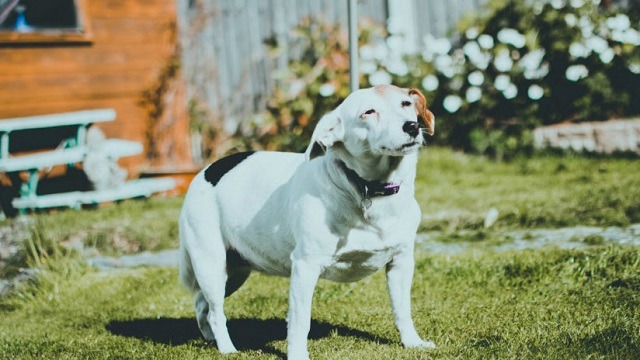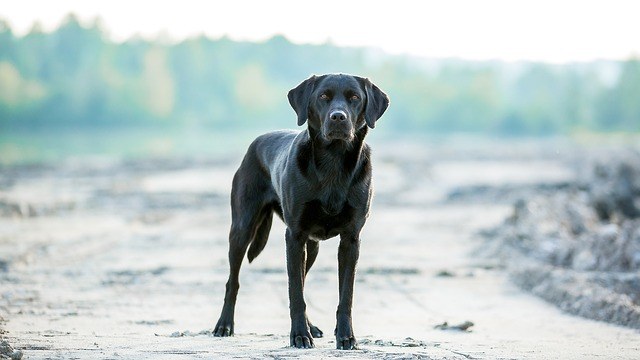Living with a blind dog can be challenging. If the dog was born with that handicap it can be a bit easier to handle, but if the blindness was caused by a common eye disease or trauma, it might take a while for the dog to learn to trust their other senses. The onset of the condition also has an impact on the dog’s ability to adapt – gradual processes (e.g. age-related cataracts) have an easier adaptation process, while acute processes (e.g. trauma to an eye) can be more demanding.
Regardless, your buddy will have to rely greatly on you. But don’t despair! You can help them live a perfectly healthy, long and normal life and, in the meanwhile, you will be creating a bond stronger than anything you might have imagined.
Baby-proof your house
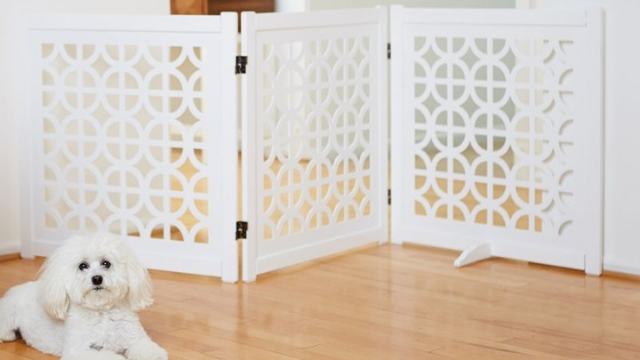
Get to your dog’s eye level, picture a baby and try to spot any hazards around your house
Use edge and corner protectors anywhere they might bump and injure themselves. Consider removing some furniture or decorations so the path is clear and the dog can move more freely. Also remove any slippery rugs and look out for other slippery surfaces. Perhaps an anti slippery surface / rug / mat will be helpful.
Baby gates might also be required to block stairwells, as a blind dog won’t be able to tell by scent if there are any changes to the floor.
Provide location cues

You can use different air fresheners or essential oils in each room so the dog can tell where they are by scent. However, bear in mind that some dogs may be allergic, and some essential oils should be avoided. For more information, reach out to our vet team.
To help them out with their specific location you can also insert other clues such as rugs with different textures. Then they will be able to tell exactly where they are or where they are heading to. However, make sure you steer clear of any slippery rugs or other slippery surfaces where your buddy could easily trip – those should be avoided for obvious reasons.
If you don’t want to cover your floors with rugs, consider at least to make a path to their food and water bowls so they can locate them easily.
Use word cues
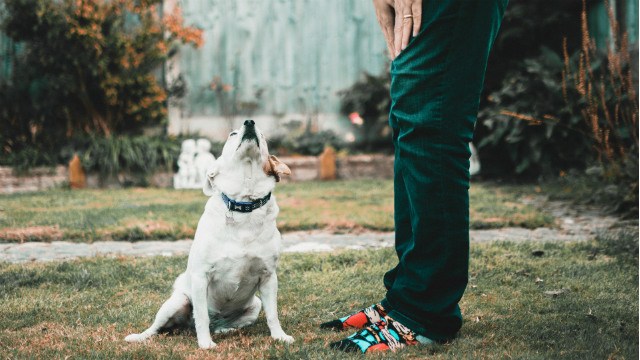
Cues are extremely important when it comes to a blind dog. That is the only way you have to communicate with them without having to physically touch them. Things like “watch out” or “stay” should be your priority to warn them of any danger.
You will need to rely on cues and touch to teach them exactly what you mean, but other than that, it will be like teaching a regular dog.
Talk to them
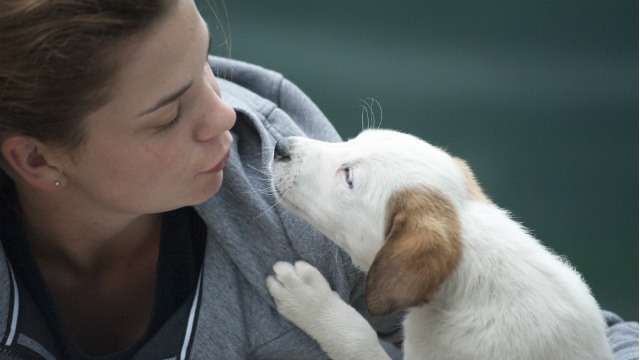
Since a blind dog can’t see you, the only way for them to understand you and your moods is through language. Keep talking to them to provide company in their dark world. Your bond will be naturally reinforced by this too.
Your intonation will also work as a cue for the dog to assess what is going on around them.
Always announce your presence and that you are approaching. Never take you dog by surprise. Keep in mind that old dogs that start losing their sight, usually have their hearing skills impaired as well.
Tell other people
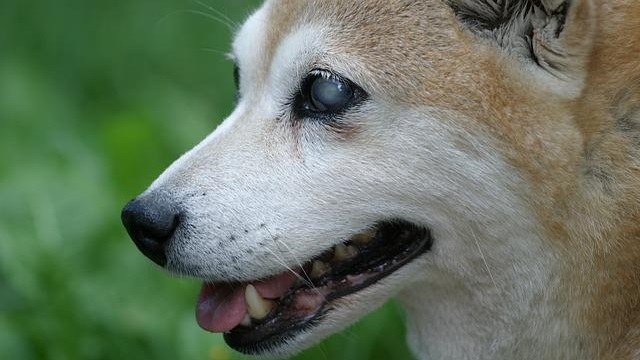
Let everyone know about your dog’s handicap and consider letting them use a vest or a bandana with that information when you take them out too.
People will be less likely to approach your buddy without making their presence noticed first. If not, they might get startled and become anxious, try to run away in fear or, worst case scenario, growl and even bite in an effort to defend themselves.
Play with scents

Your dog may be blind, but they will likely enjoy fetching balls and frisbees as much as any other canine.
Since they can’t see your movements or to where you make your throw, the key is to use scents. Essential oils are usually a good option as their fragrance is strong and concentrated. Put a few drops inside a ball, for instance, or in a little corner of a toy. Once again, look out for the kind of oil and its concentration – most of them need to be diluted. Strong scented treats and food are also great.
The goal is for the dog to be able to smell it easily, not for them to ingest them, so a few drops are enough.
Play with noises, too
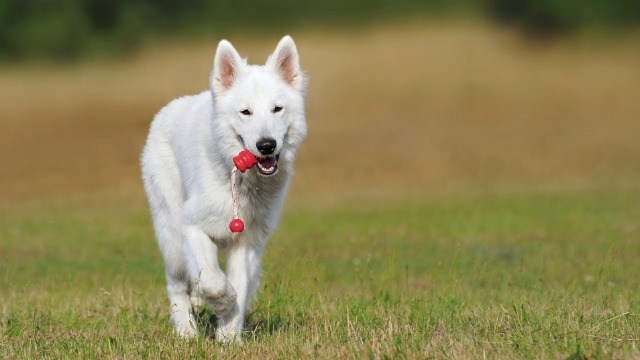
When choosing toys to give to your blind dog, focus on those with different textures and that make noises, like squeaky toys or toys with bells.
This will help them recognize which toy they’re picking up, it will be funner for them and it will also be easier to locate the toy in case they let it roll around.
Wind chime
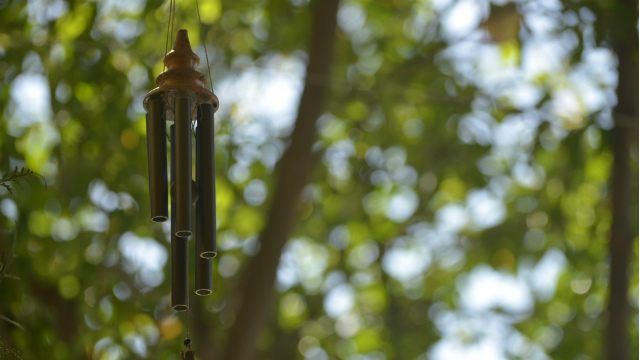
If you have a yard and let your dog around it, consider putting a wind chime next to the entry back to your house.
The sound will not only guide the dog to the right door, but it will also help them have a better sense of where they stand in the yard.
Keep the floor clean

Don’t leave toys, clothes or shoes on the floor to reduce the risk of the dog tripping and injuring himself.
Clutter will also make it harder for them to navigate and understand their location.
Try leaving the TV on
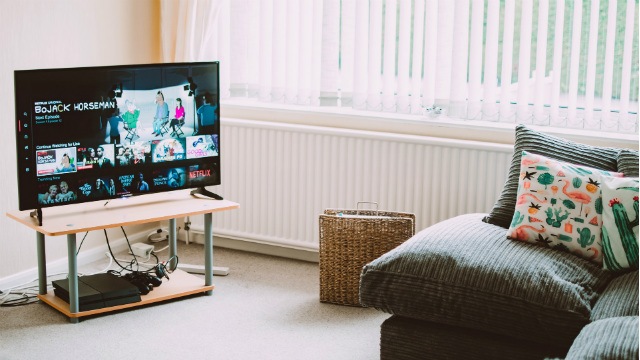
The dog can use the sounds coming from the TV to identify a specific room and they can follow it to trace their steps back in case they get disoriented. However, make sure it’s not too loud, otherwise it might make them anxious.
Besides, it will also provide them some company when you’re away.
Conclusion

A blind dog is just like any other dog, except that they can’t see. They also adore their families, love to play around and feel the fresh air on their muzzles when going out, and are also willing to move worlds if necessary to protect you and show you their affection.
It can be challenging to care for a blind dog, but ultimately, the bond that you create and the love your share will make everything easier and worth it.
Maven is all about proactive pet care. Be your best friend’s best friend by giving them 24/7, high-quality, industry-leading vet care to improve their mental health, physical health and more. No more frantic googling or unneeded stressful visits to the vet – Maven helps you save hundreds while also ensuring your pet lives the best life possible. Get your kit now!

